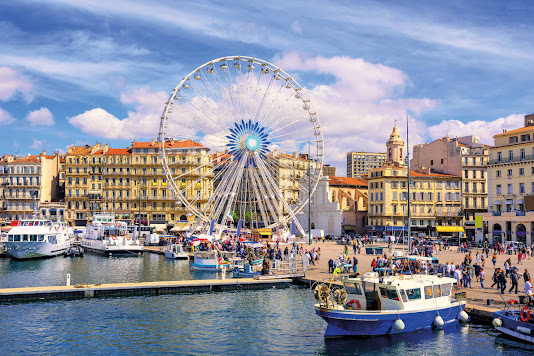Find the best time to visit India
When is the best time to travel to India? Or, when is the best
time to visit India? If you are planning a trip to India and are looking for nonstop flights
to India
from NYC. And if you have any of the above concerns,
you've come to the right place. Because we've put together a comprehensive
guide to the best time to visit India.
India is a vast country with the seventh-largest land area of any
country on the planet. And, within larger countries, there is no time of year
when the weather is consistent across all of its regions. Thus, deciding when
to visit India is heavily influenced by the region of the country you intend to
visit.
The climate at the Indian Subcontinent
During the wet/monsoon season, India experiences the highest
humidity. By the end of May, the monsoon has moved from the coastal region of
Kerala to the country's northeast. Thus, by the end of May, the Karelian coast
is receiving sputtering rain showers, and the northeast region will receive
these showers in a month and a half. During this time, rain showers and bright
bursts of sunlight become more common, and rainbows appear more frequently,
contributing to an increase in humidity.
Book direct Dallas to India
flights or anywhere else to experience these
refreshing water showers. The temperature drops and a cool breeze begins to
blow frequently, and the country appears greener than ever thanks to plenty of
rain and sunshine. However, flooding is a problem in many areas due to heavy
rains. Landslides and accidents caused by heavy rain become common, and the entire
valley system can be cut off for weeks at a time.
What is
the best time to visit the Indian Subcontinent?
The cool and dry months of November to March are ideal for
visiting the Indian subcontinent. Include Mumbai and Goa in your travel plans
if you want to avoid the chill and enjoy pleasant weather. However, if you are
fine with temperatures that do not drop below 10 degrees Celsius, Delhi, Agra,
Varanasi, Madhya Pradesh, and Rajasthan are excellent choices.
The months of May and June are ideal for visiting the southern
part of the country, where the heat is never off duty. The heat begins to
become suffocating during this time, making it an unsuitable time for a visit.
Thus, the months of January to March are ideal for planning a trip to southern
states such as Tamil Nadu and Kerala.
However, beginning in March, the Himalayas become more accessible
to visitors from all over the world. The months of August and September see the
highest number of tourists visiting the Himalayas than any other time of year,
owing to the ideal conditions for hiking and trekking. The rest of the
subcontinent receives constant splatters of rain showers as the weather in the
Himalayas warms up these months.
The monsoon begins to return from the north at the beginning of
September. However, for the next few months, it will be hosted by the southern
region. From October to December, the Indian coast, which includes Tamil Nadu,
Andra Pradesh, and southern parts of Kerala, is soaked for the second time. As
a result, by the end of December, most of the subcontinent begins to dry out,
with no rain showers.
Name
the best month to visit India
The best months to visit India are either February or November. A
period of time between the peak travel months of December and January that falls
under the umbrella of the shoulder or in-between
travel season. So, neither of these months are particularly hectic, offer
amenities at reasonable prices, occur before rain showers begin to fall in
various parts of the country, and nothing remains densely populated.
Visiting
India during the winters between December and February
During the winter, the Indian subcontinent experiences a
contrasting climate between the northern and southern parts of the country.
While Uttar Pradesh, for example, is characterized by chilly winds and
temperatures below 5 degrees Celsius. The southern region of the country,
including Kerala's coastal regions, experiences frequent rain showers and
strong, hot sun splashes.
The months of December to February mark the start of the country's
peak travel season. Flooding occurs on Goa's coastal beaches. During this time,
the coastal region is blessed with beautiful weather and no rain. If you've
always wanted to go to one of Goa's famous parties, you'll be glad to know that
the majority of them take place during this time of year.
As Christmas and New Year's approaches, the beaches of Goa become
increasingly crowded with tourists. During this time of year, both domestic and
international tourists begin to congregate on the beaches. As a result, if you
are planning a trip during this time, the best option would be to book
everything in advance.
While one part of the country becomes overrun with visitors from
the country's heart and capital, New Delhi suffers from the worst pollution.
The smog has engulfed the nation's capital, making it difficult to ride or walk
on the roads.
Visiting
India during the spring months from March to May
With the arrival of spring, the centre of the country begins to
heat up and the temperature begins to rise. If you enjoy spending time in
nature, March is an excellent time to visit the Indian subcontinent's wildlife.
Temperatures in states such as Uttar Pradesh, Delhi, and Rajasthan
range from 35 to 40 degrees Celsius. While states such as Kerala and Goa
continue to be soaked by heavy and frequent rain showers.
Visiting
India during the summer in months from June to August
Summer months are ideal for visiting the country's hill stations.
Spend time hiking and trekking in Ladakh, Manali, or Mussoorie's hills. While
the rest of the subcontinent remains impassable for travellers. These months are
the ideal time to visit India for travellers who don’t like chilly Indian
winters. As in these months, you can enjoy the natural beauty of the country
while taking part in many adventure sports. Places like Rishikesh, Goa, Mumbai
along with hill stations remain filled with travelers
from all around the world.



Comments
Post a Comment